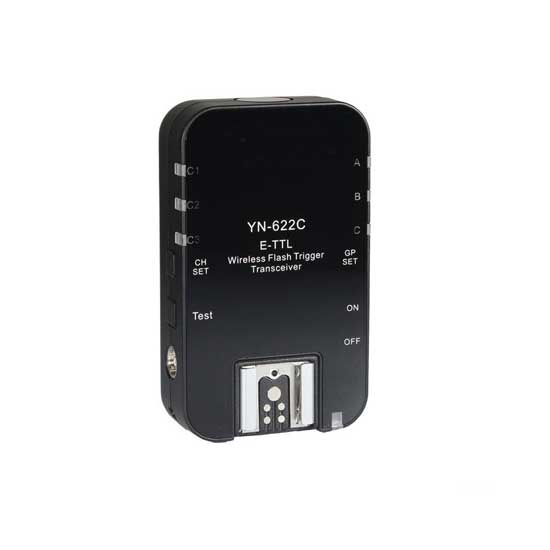

Presumption would be that the MkI Canon speedlights would have a similar behavior to that on the YN-622 triggers: only ratio power control in eTTL mode, or possibly manual power level control if the YN-E3-RT dedicated transmitter unit is given a backwards compatibility mode (like the YN-622-TX's) to use eTTL settings to "fake" manual power levels.Īlso, a post from a YN engineer on the POTN board indicates that Supersync is not possible in the RT system. However, note that on the promotional announcement the YNE3-RX, that only the following flash models are listed as "compatible" (by which we're assuming hotshoe communication/TTL-type compatible) are: We're assuming remote power control and most of the 622 features set. compatibility with single-contact triggering (manual-only or other-brand flashes).
#Yongnuo supersync Pc
#Yongnuo supersync full
But the assumption is that these will allow full power control over the MkII EX speedlites (and other Canon camera menu-commandable flashes) via an RT master (such as a 600EX-RT, YN-600EX-RT, ST-E3-RT, or YN-E3-RT). And they're so new that there aren't a lot of field reports right now. Right now, there are some unknowns about them. Since the flash is firing thousands of times the individual flashes are several stops lower in power than in the normal flash mode.Stacking an ST-E3-RT on top of a YN-622 transceiver could work, but you'd only have ratio control in eTTL over any pre-MkII Canon EX speedlites connected to YN-622Cs, not manual power level control, and you're still using two separate triggering systems.Ī better solution might be to wait and see how the YNE3-RX receivers work out.

Firing this much means that all parts of the image are recorded since some light is present at all points of travel of the shutter slit.

HSS causes the hot-shoe flash to fire thousands of times during the time it takes for the shutters to travel.

High Speed Sync only works with hot-shoe flash units that are capable of HSS. Hot-shoe flash units have a different type of discharge circuit and their flash duration increases as the power increases, but is still so short that SuperSync or HyperSync usually doesn't work. Unfortunately with most studio strobes the flash duration decreases as the power increases and if you use SuperSync or HyperSync you need more flash power. SuperSync or HyperSync works well with many studio strobes units since their flash duration is usually longer than that of hot-shoe flash units. You will expose all the image but only a slice of the light output by the flash will be used and the exposure will have to be increased compared to what it would be if a shutter speed equal to or less than the sync speed were used. With SuperSync or HyperSync the flash only fires one time but if the flash duration is long enough the camera shutter can open and close at a shutter speed higher than the sync speed while the flash is still on. If you fire a single flash when the shutter speed is shorter than the sync speed normally part of the image will not be exposed, you will get a black bar, and underexposed area, across part of the image. The result is a shutter slit traveling across the image sensor. This is why a single flash can expose the entire image.Ībove the sync speed the second shutter starts to travel before the first shutter finishes its travel. When you shoot at the sync speed or lower the first shutter opens fully before the second shutter starts to travel. SuperSync or HyperSync is not the same as High Speed Sync. Just last night I was syncing my 5D at 1/8000s with my Jinbei Freelander II. Ironically cheap flashes have longer duration and work best with this. I have the 622 and its has a feature called SuperSync which works with flashes that have long tail (duration).


 0 kommentar(er)
0 kommentar(er)
